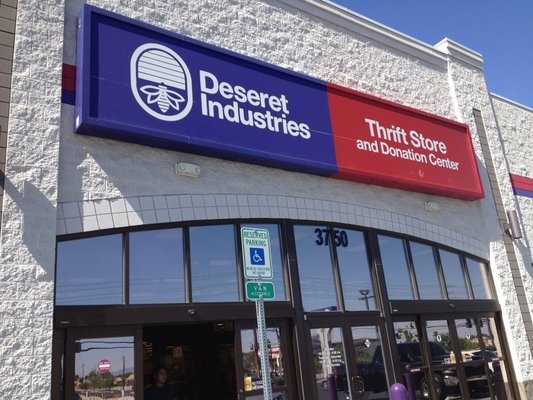
by Keith L. Brown | Apr 6, 2014 | About Mormons
Deseret Industries is a non-profit organization that includes a chain of retail thrift stores very similar to the familiar Goodwill Industries. It is a division of Welfare Services of The Church of Jesus Christ of Latter-day Saints (inadvertently called the “Mormon” Church by the media and others), and in addition to its thrift stores, job skill training is also provided for the physically, emotionally, and socially challenged, providing them an opportunity to be placed in private sector employment.
Providing for the Temporal Needs of Others
 The retail thrift stores are generally located in areas where church membership is strong. There are a total of 46 stores located in Arizona, California, Idaho, Nevada, Oregon, Utah, and Washington. The stores mainly operate from donations of items that people no longer have a use for such as furniture, appliances, computers, and clothing. The donated items are in turn sold to those in need at low cost.
The retail thrift stores are generally located in areas where church membership is strong. There are a total of 46 stores located in Arizona, California, Idaho, Nevada, Oregon, Utah, and Washington. The stores mainly operate from donations of items that people no longer have a use for such as furniture, appliances, computers, and clothing. The donated items are in turn sold to those in need at low cost.
Deseret Industries also sells new furniture, much of which is received from a manufacturing plant in Salt Lake City, Utah. The thrift stores also provide clothing and other items in support of worldwide humanitarian efforts. At the request of a local bishop (congregational leader), some of the donated items may also be dispersed to help those who are victims of a disaster such as a fire or flood. The revenue obtained is used to support other Church Welfare Services organizations and programs throughout the world.
A person does not have to be a member of The Church of Jesus Christ in order to receive training at Deseret Industries; however, he must be endorsed for training by a local LDS Bishop. Employment at Deseret Industries is considered rehabilitative training rather than a career. Therefore, employment there does not typically last more than 12 months.
Help for the Elderly and Those with Disabilities
 Deseret Industries’ motto is “People Helping People Help Themselves.” And so, Deseret Industries provides opportunities for employees to learn new job skills, earn money to help support themselves and their families, and when they are ready, help is provided in finding a suitable job. Individuals are able to gain retail experience working in the thrift stores, trade skills at D.I. Manufacturing, and various other work skills while assisting people worldwide at the Latter-day Saint Humanitarian Center. A wealth of training courses are available as Deseret Industries partners with community colleges, applied technology centers, and other institutions that offer training courses in accounting, information technology, healthcare, and other areas.
Deseret Industries’ motto is “People Helping People Help Themselves.” And so, Deseret Industries provides opportunities for employees to learn new job skills, earn money to help support themselves and their families, and when they are ready, help is provided in finding a suitable job. Individuals are able to gain retail experience working in the thrift stores, trade skills at D.I. Manufacturing, and various other work skills while assisting people worldwide at the Latter-day Saint Humanitarian Center. A wealth of training courses are available as Deseret Industries partners with community colleges, applied technology centers, and other institutions that offer training courses in accounting, information technology, healthcare, and other areas.
Those in training are called associates, and some of them have difficulty finding employment because of disabilities and age. In addition to the associates, there are full-time staff members to include store managers, retail processing coordinators, job coach trainers, and development specialists. Trainees at Deseret Industries do not receive retirement benefits, medical coverage, vacation, or sick leave. The purpose behind this is to prepare people for the workplace and to work in the community.
Serving Others – In the Service of God
 Members of The Church of Jesus Christ are encouraged to volunteer at their local Deseret Industries store. They can help take care of the store or speak to their bishop about serving as a Church-Service Missionary.
Members of The Church of Jesus Christ are encouraged to volunteer at their local Deseret Industries store. They can help take care of the store or speak to their bishop about serving as a Church-Service Missionary.
Individuals who wish to volunteer must meet age and other risk requirements. Children under the age of 7 are not eligible to volunteer, and youth between the ages of 8 to 16 may volunteer only when accompanied by an adult. Those who volunteer may:
-
Teach life skills.
-
Mentor individuals.
-
Help individuals learn work skills.
-
Participate in community service projects.
-
Participate in humanitarian service projects.
Church-Service Missionaries help in invaluable ways by:
-
Mentoring individuals.
-
Teaching life and work skills.
-
Teaching English.
-
Helping individuals find a job.
-
Developing community resources.
-
Coordinating community service projects.
Individuals who volunteer their time to bless the lives of others are rewarded, not monetarily, but by many blessings, small and large, in return.
A Donation Waiting to Happen: Sasquath
A Donation Waiting to Happen: Rice Cooker
A Donation Waiting to Happen: Work Bench
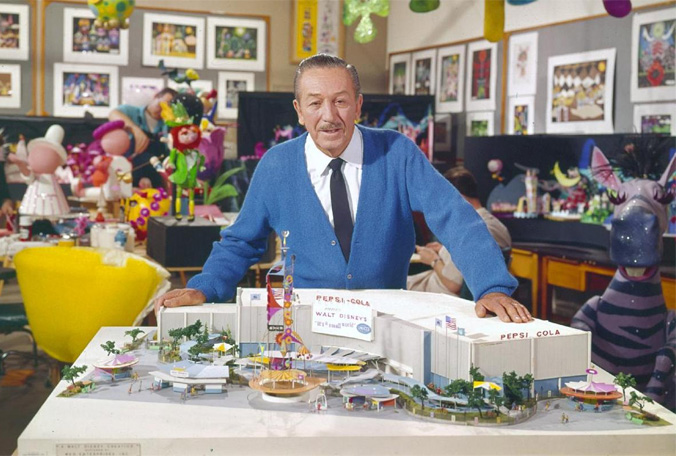
by Keith L. Brown | Mar 27, 2014 | Mormons in the News
Anyone who has ever visited a Disney theme-park in the United States or abroad is very familiar with the sing-along song “It’s A Small World.” On 10 April 2014, the “It’s A Small World” attraction which has become “an iconic part of a day at one of Disney’s enclaves” [1] will celebrate its 50th anniversary in a historic, global sing-along which will include guests and cast members at Disney parks from three continents and four countries. Disney’s US resorts – Disneyland in California and Walt Disney World in Florida – will join forces with Disneyland Paris, plus two of Disney’s parks in the Far East – the Hong Kong Disneyland Resort and Tokyo Disney Resort – for an arms-around-the-globe rendition of the famous song. Included among those joining in the celebration will be the world renowned Mormon Tabernacle Choir.
“It’s A Small World” Disney Attraction
 Walt Disney Parks and Resorts are located in various parts of the world: Disneyland Park in California, the Magic Kingdom (in Florida), Tokyo Disneyland, Disneyland Paris, Hong Kong Disneyland, and Shanghai Disneyland Park. The Disney attraction “It’s A Small World,” a popular musical boat ride, is located in the Fantasyland area at each of the Walt Disney Parks and Resorts. “The ride features over 300 brightly costumed audio-animatronic dolls in the style of children of the world, frolicking in a spirit of international unity and singing the attraction’s title song, which has a theme of global peace.”
Walt Disney Parks and Resorts are located in various parts of the world: Disneyland Park in California, the Magic Kingdom (in Florida), Tokyo Disneyland, Disneyland Paris, Hong Kong Disneyland, and Shanghai Disneyland Park. The Disney attraction “It’s A Small World,” a popular musical boat ride, is located in the Fantasyland area at each of the Walt Disney Parks and Resorts. “The ride features over 300 brightly costumed audio-animatronic dolls in the style of children of the world, frolicking in a spirit of international unity and singing the attraction’s title song, which has a theme of global peace.”
It’s a Small World was created by WED Enterprises as the 1964 New York World’s Fair’s UNICEF pavilion sponsored by Pepsi. It featured a kinetic sculpture, The Tower of the Four Winds, a 120-foot perpetually spinning mobile created by WED designer Rolly Crump, at its entrance. It was one of four attractions (Magic Skyway [Ford], Great Moments with Mr. Lincoln [Illinois], and The Carousel of Progress [GE]) which were used by Disney to test concepts and ride systems, then moved and re-built at Disneyland after the World’s Fair closed in 1966.
Mary Blair was responsible for the attraction’s whimsical design and color styling. Blair had been an art director on several Disney animated features (including Cinderella, Alice In Wonderland, and Peter Pan). Like many Disneyland attractions, scenes and characters were designed by Marc Davis, while his wife, Alice Davis, designed the costumes for the dolls. Rolly Crump designed the toys and other supplemental figures on display. The animated dolls were designed and sculpted by Blaine Gibson. Walt was personally involved with Gibson’s development of the dolls’ facial design (each animated doll face is completely identical in shape, hence the name “It’s a Small World”). [2]
“It’s A Small World” – The Song
 The song “It’s A Small World,” which has now become a Disney classic, was written and composed by an Academy Award –winning team of brothers, Robert B. and Richard M. Sherman. The song was written in the wake of the Cuban Missile Crisis, which greatly influenced the song’s message of peace and brotherhood. The song, which is sung by children in their native languages – French, Italian, Japanese, Spanish, and English, reinforces “the attraction’s larger message of cultural unity and harmony.” [3]
The song “It’s A Small World,” which has now become a Disney classic, was written and composed by an Academy Award –winning team of brothers, Robert B. and Richard M. Sherman. The song was written in the wake of the Cuban Missile Crisis, which greatly influenced the song’s message of peace and brotherhood. The song, which is sung by children in their native languages – French, Italian, Japanese, Spanish, and English, reinforces “the attraction’s larger message of cultural unity and harmony.” [3]
There is a third verse to the song that has never been used as part of the music for the ride. It was written for the 45th Anniversary of the attraction:
It’s a world of wonder
A world of worth
And in years to come
We’ll know peace on earth
We will open our eyes
And we’ll all realize
It’s a small world after all.
Bringing the Celebration to Life
To help announce the upcoming celebration, Disney Parks released a video with people on six continents, in over 25 countries, singing, dancing, and playing “It’s A Small World.” Included in the video is the Mormon Tabernacle Choir, bagpipers in Scotland, Bollywood movie actors in India, and a firefighter in New York City.
It is a delight to be part of today’s announcement,” said Ron Jarrett, president of the Mormon Tabernacle Choir. “This iconic song and the Mormon Tabernacle Choir both cross generational and cultural boundaries to unite people through music. [4]
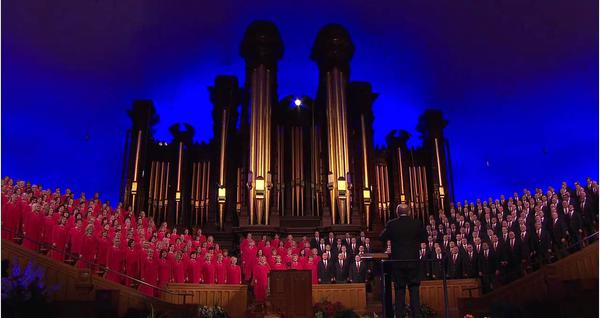 The Mormon Tabernacle Choir has a unique connection with the Disney Park attraction. The attraction first opened at the 1964 New York World’s Fair as a tribute to peace and hope. The Mormon Tabernacle Choir which serves as a musical ambassador for The Church of Jesus Christ of Latter-day Saints (inadvertently referred to as the “Mormon” Church by the media and others) was a featured guest at the fair and performed several musical numbers which ultimately led to the recording of the album titled At the Fair. Today the Choir, which is composed of 360 volunteer voices under the direction of Mack Wilberg and associate director Ryan Murphy, is heard worldwide, along with the 150 member Orchestra at Temple Square, via television, radio, satellite transmission, internet broadcasts, tours, and numerous recordings.
The Mormon Tabernacle Choir has a unique connection with the Disney Park attraction. The attraction first opened at the 1964 New York World’s Fair as a tribute to peace and hope. The Mormon Tabernacle Choir which serves as a musical ambassador for The Church of Jesus Christ of Latter-day Saints (inadvertently referred to as the “Mormon” Church by the media and others) was a featured guest at the fair and performed several musical numbers which ultimately led to the recording of the album titled At the Fair. Today the Choir, which is composed of 360 volunteer voices under the direction of Mack Wilberg and associate director Ryan Murphy, is heard worldwide, along with the 150 member Orchestra at Temple Square, via television, radio, satellite transmission, internet broadcasts, tours, and numerous recordings.
Fans are encouraged to join the celebration virtually. To help make this possible Disney has launched a special website where fans can record videos of themselves singing “It’s A Small World.” The special website also has a feature which allows fans to create virtual “It’s A Small World” dolls that they can in turn share with family and friends via social media. The dolls will benefit United Nations Children’s Fund (UNICEF), an organization that provides health care and immunizations, clean water and sanitation, nutrition, education, emergency relief and much more to children worldwide.
‘It’s A Small World has inspired hundreds of millions of people through its timeless theme,’ says Tom Staggs, chairman of Walt Disney Parks and Resorts. ‘The 50th anniversary of this attraction represents a celebration of the shared optimism, hope and humanity of people throughout the world.’ [1]
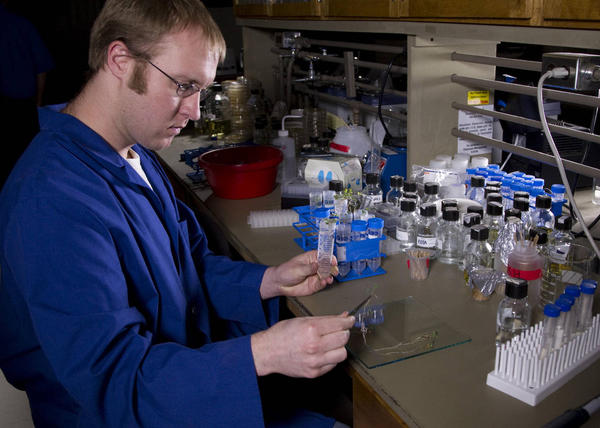
by Keith L. Brown | Mar 20, 2014 | Mormons in the News
The word science comes from the Latin “scientia,” meaning knowledge. A basic dictionary definition of the word “science” is “the intellectual and practical activity encompassing the systematic study of the structure and behavior of the physical and natural world through observation and experiment.” Thus, through observation and experimentation, a scientist is able to acquire knowledge to describe and explain natural phenomena to produce useful models of reality.
Knowledge of Raw Natural Gas Leads to Experimentation of New Energy Source
 Using their combined knowledge of raw natural gas, chemists from Brigham Young University (BYU) and the Scripps Research Institute, in the March 14 issue of Science magazine, identified a process that could be the answer to the current energy problem in the United States. Through observation and experimentation they have discovered a new way to turn raw natural gas into an upgraded liquid alcohol fuel, thus reducing the dependence on petroleum as a base for fuel.
Using their combined knowledge of raw natural gas, chemists from Brigham Young University (BYU) and the Scripps Research Institute, in the March 14 issue of Science magazine, identified a process that could be the answer to the current energy problem in the United States. Through observation and experimentation they have discovered a new way to turn raw natural gas into an upgraded liquid alcohol fuel, thus reducing the dependence on petroleum as a base for fuel.
The most unexpected breakthrough in the paper was that ordinary “main group” metals like thallium and lead can trigger the conversion of natural gas to liquid alcohol. The research teams found that natural gas to alcohol conversion occurs at 180 degrees Celsius – just a fraction of the heat needed with traditional “transition metal” catalysts (1400-1600 degrees Celsius). [1]
The researchers used different fields of science to understand how and why this process, which eliminates an entire step in the production of fuel, works. For example, BYU professor Daniel Ess used chemistry theory to understand how and why the process works at low temperatures under mild conditions. “Hardly anybody actually tries to do reactions on a genuine mixture that you would get from natural gas,” said Ess. “Turns out we can just directly use the mixture of what comes out of natural gas and convert all three of them together.” [1] Ess also commented that the potential benefits of the new process aren’t limited solely to the production of fuel, but other chemicals derived from natural gas such as methanol are important in manufacturing. No matter how the pie is sliced, the new process cuts down on energy usage.
Discovery of Rare Gene Variants Relate to Doubling Risks of Alzheimer’s disease
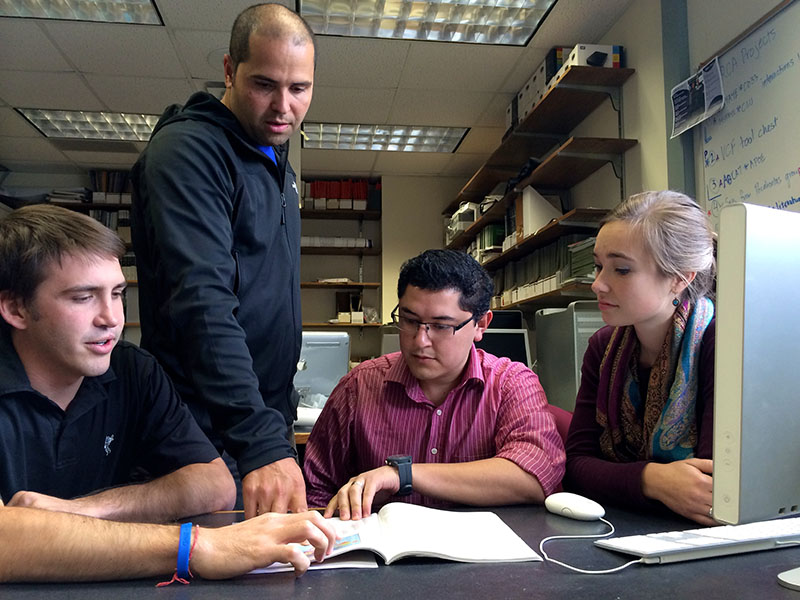 In the realm of social science, a team of BYU researchers are continuing their studies of the genes that may be the cause of placing people at high risk of developing Alzheimer’s disease. Since 2009, BYU researchers have co-authored the publication of 22 new Alzheimer’s risk gene studies, and recently they have discovered gene variations that could possibly double the risk of developing Alzheimer’s later in life.
In the realm of social science, a team of BYU researchers are continuing their studies of the genes that may be the cause of placing people at high risk of developing Alzheimer’s disease. Since 2009, BYU researchers have co-authored the publication of 22 new Alzheimer’s risk gene studies, and recently they have discovered gene variations that could possibly double the risk of developing Alzheimer’s later in life.
The research is led by Washington University School of Medicine at St. Louis, Missouri. It was published online in the scientific journal, Nature, on 11 December 2013. The authors of the study are Biology professors John Kauwe and Perry Ridge, and BYU post-baccalaureate Maegan Leary. Cameron Schmutz, an undergraduate, is the co-author of the study.
Using a clever approach for identifying rare mutations, the investigators focused on families with several members who had Alzheimer’s. The team sequenced genes from several individuals in 14 families, some of which had Alzheimer’s and some who did not.
Comparing DNA from affected people in a family to those in the same family without the disorder, the team eventually identified variations in a gene (PLD3) that showed up in affected family members. Researchers then studied another 11,000 people with and without the disease and found PLD3 gene variants doubled the risk for Alzheimer’s disease. [2]
Alison Goate, a co-author from Washington University, stated that by studying gene variants within families, the team is able to narrow down the number of variants that may actually be the cause of the disorder, whereas, if they had tested unrelated individuals, the statistical analysis would have been skewed and they would not have been able to identify these rare variants.
To complete the study, “researchers used a process called whole exome sequencing to identify mutations in a gene never before linked to Alzheimer’s disease then used other technologies to sequence those variants in additional samples.” [2] Much of that work took place on the BYU campus where undergraduate, Cameron Schmutz, tested and analyzed over 5,000 DNA samples.
“This progress has been very rapid and bodes well for the future fight against this disease,” said Dr. Kauwe. “While new genes do not immediately mean new cures, they provide the foundation of knowledge upon which effective prevention and cures can be built. Each new gene provides us with new insights into therapeutic approaches that might work. Scientists around the world are excited to see these new discoveries and try to develop better drugs using that information.” [2]
There are many different areas of science that are open for exploration. As scientists continue to apply their knowledge and scientific methods in investigating matters of science, whether in the natural or social realm, more and more breakthroughs will be made through their deductive observations and reasoning.
Additional Resource:
New Infrared Technique aims to Remotely Detect Dangerous Materials

by Keith L. Brown | Mar 13, 2014 | About Mormons
Lexi Walker is an eleven-year-old sixth grader from Sandy, Utah, who has been blessed with the extraordinary ability to capture the hearts of audiences with her amazing singing voice. Her musical talents have gained her merit and accolades worldwide as she has performed on television, on stage, and in different venues.
Included in her repertoire are such classics as “Pie Jesu” from Andrew Lloyd Webber’s “Requiem” and “Somewhere over the Rainbow” from the first-rate movie The Wizard of Oz. Add to her credits a most recent success of recording “Let It Go” from the Disney movie Frozen with world renowned singer Alex Boyé and the One Voice Children’s Choir which received around half a million views in its first day on YouTube, and 11 million views in the first 5 days.
A Professional Singer
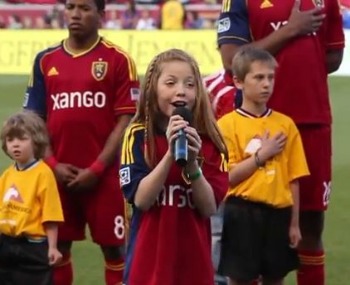 Lexi Walker launched her professional singing career about a year ago. She first made headlines after singing the National Anthem at a Real Salt Lake game in 2013. The YouTube video has gone viral. She has also performed at the Assembly Hall on Temple Square and Stadium of Fire. In an interview with Fox 13 News, Lexi was asked when she began singing, and she replied that she has been singing her whole life. She has remarked, “I’ve always loved the performing arts. I love the message that’s in songs… that the world is so fun.” [1]
Lexi Walker launched her professional singing career about a year ago. She first made headlines after singing the National Anthem at a Real Salt Lake game in 2013. The YouTube video has gone viral. She has also performed at the Assembly Hall on Temple Square and Stadium of Fire. In an interview with Fox 13 News, Lexi was asked when she began singing, and she replied that she has been singing her whole life. She has remarked, “I’ve always loved the performing arts. I love the message that’s in songs… that the world is so fun.” [1]
Lexi is a young girl with a powerful voice and is definitely well beyond her years in being able to interpret music in such an astounding way that has left audiences awestruck. After the Disney movie Frozen was released and the song “Let It Go” became popular, millions of people around the globe began to become familiar with the name Lexi Walker after she teamed up with Alex Boyé to cover the song. The YouTube video is a viral sensation with over 24.5 million views.
 The Today Show did a cover on “Let it Go,” because of how popular it is with young girls all over America, who seem to be singing it 24/7. The show featured video clips from YouTube.com of little girls belting the song, showed skaters skating to the piece in Central Park, and featured the New York Children’s Choir performing the song with three accomplished youth soloists, and Lexi was one of them, the youngest and smallest of the three talented girls.
The Today Show did a cover on “Let it Go,” because of how popular it is with young girls all over America, who seem to be singing it 24/7. The show featured video clips from YouTube.com of little girls belting the song, showed skaters skating to the piece in Central Park, and featured the New York Children’s Choir performing the song with three accomplished youth soloists, and Lexi was one of them, the youngest and smallest of the three talented girls.
When it comes to music, she loves everything Broadway, Jazz, Pop and Classical. Some of her favorite performances include singing the national anthem for the Stadium of Fire, the Jacksonville Jaguars, being a guest performer at Temple Square and singing for President Monson. She was also named the 2013-2014 Canyons School District K-12 Idol. Lexi is especially grateful for her family and all the support they give her! [2]
A Normal Sixth Grader
 Lexi’s family, including her grandmother, have been a major influence in helping her learn to sing. In addition to performing, she also likes to sing for fun.
Lexi’s family, including her grandmother, have been a major influence in helping her learn to sing. In addition to performing, she also likes to sing for fun.
However, her life is not just about the music, she is a sixth grade student and like most other students, she has her share of homework and school projects which keep her quite busy. Her favorite subjects are math, science, and art. She also loves Thai food, sushi, and lots of vegetables.
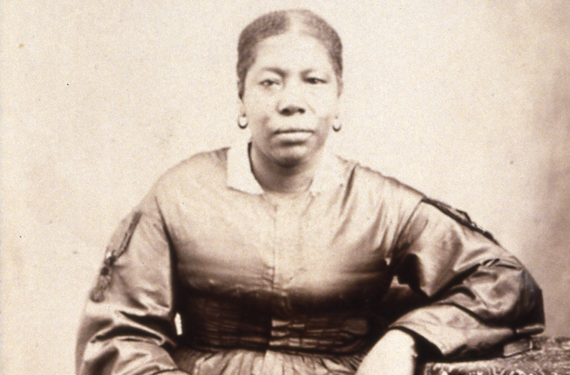
by Keith L. Brown | Feb 28, 2014 | About Mormons
The word “pioneer” is basically defined as a person who is among the first to explore or settle a new country or area. A synonym for the word “pioneer” is the word “trailblazer” which perfectly describes Jane Elizabeth Manning James, an early African-American member of The Church of Jesus Christ of Latter-day Saints (inadvertently referred to as the “Mormon” Church by the media and others).
A Young Seeker of Truth
 Jane Elizabeth Manning James was born to Isaac and Eliza Manning in Wilton, Connecticut, on 22 September 1822. At the young age of six, she went to live with the family of Joseph Fitch, a wealthy White farmer in Connecticut. She was raised by the Fitch’s daughter and lived as a servant in their home, but she was not a slave. She was a member of the Presbyterian Church, and it was there that she became grounded in Christian principles which later helped to prepare her to receive and accept the message of the gospel of Jesus Christ which was preached by two Mormon missionaries traveling through the area where she lived. In her own words, Jane recounted her conversion to Mormonism:
Jane Elizabeth Manning James was born to Isaac and Eliza Manning in Wilton, Connecticut, on 22 September 1822. At the young age of six, she went to live with the family of Joseph Fitch, a wealthy White farmer in Connecticut. She was raised by the Fitch’s daughter and lived as a servant in their home, but she was not a slave. She was a member of the Presbyterian Church, and it was there that she became grounded in Christian principles which later helped to prepare her to receive and accept the message of the gospel of Jesus Christ which was preached by two Mormon missionaries traveling through the area where she lived. In her own words, Jane recounted her conversion to Mormonism:
When about fourteen years old, I joined the Presbyterian Church—yet I did not feel satisfied. It seemed to me there was something more that I was looking for. I had belonged to the [Presbyterian] Church about eighteen months when an Elder of The Church of Jesus Christ of Latter-day Saints, [who] was traveling through our country, preached there. The pastor of the Presbyterian Church forbade me going to hear them as he had heard I had expressed a desire to hear them; nevertheless I went on a Sunday and was fully convinced that it was the true gospel he presented and I must embrace it. The following Sunday I was baptized and confirmed a member of The Church of Jesus Christ of Latter-day Saints. [1]
A Stalwart Pioneer
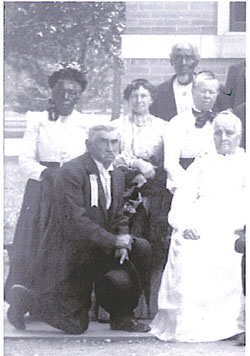 After hearing the Mormon Elder, Charles Wandell, preach the message of the restored gospel, Jane shared the message with other members of her family who were also baptized into The Church of Jesus Christ of Latter-day Saints.
After hearing the Mormon Elder, Charles Wandell, preach the message of the restored gospel, Jane shared the message with other members of her family who were also baptized into The Church of Jesus Christ of Latter-day Saints.
In 1843, one year after she was baptized and as preparations were being made for the Latter-day Saints in the area to immigrate to Nauvoo, Illinois, Jane and eight members of her family joined the larger group. Again in her own words, Jane recounted the details of the arduous journey:
One year after I was baptized, I started for Nauvoo with my mother, Eliza Manning, my brothers Isaac Lewis, and Peter, my sisters, Sarah Stebbins and Angeline Manning, my brother-in-law Anthony Stebbins, Lucinda Manning (a sister-in-law), and myself in the fall of 1840 [sic]. We started from Wilton, Connecticut, and traveled by canal to Buffalo, New York. We were to go to Columbus, Ohio before our fares were to be collected, but they insisted on having the money at Buffalo and would not take us farther. So we left the boat and started on foot to travel a distance of over eight hundred miles.
We walked until our shoes were worn out, and our feet became sore and cracked open and bled until you could see the whole print of our feet with blood on the ground. We stopped and united in prayer to the Lord; we asked God the Eternal Father to heal our feet. Our prayers were answered and our feet were healed forthwith. [1]
When Jane and her family finally arrived in Peoria, Illinois, they were faced with opposition once again when the local authorities threatened to imprison them because they could not produce their “free papers” – papers stating that they were free Blacks and not slaves. After a time, they were able to convince the authorities that they had never been slaves, and therefore did not need “freedom papers,” and were allowed to continue on their way.
The Faith That Sustained Them in Their Journey
Frightened at the threat of imprisonment, they were anxious to move on but were slowed by a river. Seeing no bridge, they forded the river by walking into the stream until the cold water swirled around their necks. Afterward—wet, cold, frightened, and hungry—they pressed on their way, sleeping sometimes in the shelter of a log cabin, other times in the open, even when the snow fell. Jane remembered the faith that sustained them when she said, “We went on our way rejoicing, singing hymns, and thanking God for his infinite goodness and mercy to us, in blessing us—protecting us—and healing our feet.” As they approached La Harpe, Illinois, they prayed for a sick baby and it was healed. It was an exhilarating experience that gave them new hope as they entered the city of Nauvoo. [2]
Upon their arrival in Nauvoo, the welcome from the Mormons was not as warm as they had expected. In fact, as Jane recalls, her family of recent Black converts who had traveled many miles by foot to join with the Saints, was repudiated by some of the members.
A Prophet’s Warm Welcome
However, the Prophet Joseph Smith welcomed the wearied travelers with open arms into his home. She recalled that “Brother Joseph took a chair and sat down by me and said, ‘You have been the head of this little band, haven’t you?’ I answered, ‘Yes sir.’ He then said, ‘God bless you.’ “[2] Joseph assured the Mannings that they were among friends and would be protected, and invited them to stay at the Mansion House until homes could be found for them.
Within a week, members of the family were able to find homes and jobs, and on the morning that they were leaving Joseph’s home, he found Jane weeping and asked why she was upset. She responded, “The folks have all gone and got themselves homes, and I have got none.” [2]
“Yes, you have,” he said, “you have a home right here if you want it. You mustn’t cry, we dry up all tears here.” He left the room and returned shortly with Emma. “Sister Emma,” he said, “here is a girl that says she has no home, haven’t you a home for her?”
Emma offered Jane the same warm hospitality she had given scores of others in similar need. Satisfied that the tears were over, the Prophet left Emma and Jane to arrange the details. Jane was a willing worker and told Emma of her skills. She could wash and iron clothes and was a good cook and housekeeper. “When you are rested,” Emma said, “you may do the washing, if you would just as soon do that.” Jane began the following morning. [2]
Jane remained part of the Smith household for several months. She enjoyed the associations of Joseph and Emma’s family, and she often visited with Lucy Smith, Joseph’s mother. She soon became friends with other members of the household including Sarah and Maria Lawrence and Eliza and Emily Partridge.
An Eternal Family of Her Own
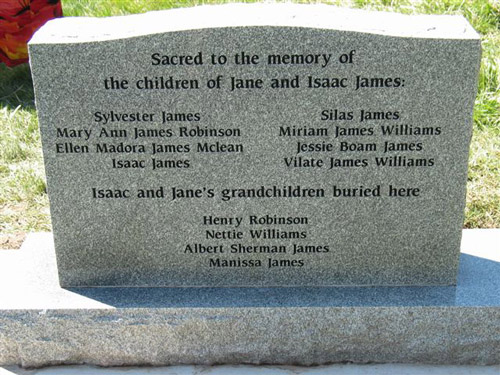 After the Prophet was martyred in the Carthage Jail in Carthage, Illinois, she went to live in the home of Brigham Young. It was there that she met and married Isaac James, a native of New Jersey, who had converted to Mormonism in 1839 at the age of 19. After they were married, the couple left for the Utah territory. In 1846, Jane gave birth to her second son while at Winter Quarters, Nebraska. Isaac and Jane Manning James and their sons Sylvester and Silas were the first free blacks to settle in Utah. They immigrated with the Ira Eldredge Company, and arrived in the Salt Lake Valley on 19 September 19 1847. In the spring of 1848, Isaac and Jane became the parents of Mary Ann, the first Black child born in Utah.
After the Prophet was martyred in the Carthage Jail in Carthage, Illinois, she went to live in the home of Brigham Young. It was there that she met and married Isaac James, a native of New Jersey, who had converted to Mormonism in 1839 at the age of 19. After they were married, the couple left for the Utah territory. In 1846, Jane gave birth to her second son while at Winter Quarters, Nebraska. Isaac and Jane Manning James and their sons Sylvester and Silas were the first free blacks to settle in Utah. They immigrated with the Ira Eldredge Company, and arrived in the Salt Lake Valley on 19 September 19 1847. In the spring of 1848, Isaac and Jane became the parents of Mary Ann, the first Black child born in Utah.
BYU Play Celebrates the Life of Jane Elizabeth Manning James
As Black History month draws to a close (in February 2014), Brigham Young University (BYU) is presenting the award-winning play “I Am Jane” which celebrates the life of Black Mormon pioneer, Jane Elizabeth Manning James. The cast of the play consists of nearly all Black actors. The play will be performed nightly from 25 February through 1 March at 7:30 PM, with a 2:00 PM matinee on Saturday in the Joseph F. Smith Building on the Provo, Utah campus. All characters in the play portray actual historical figures, and the script includes actual words that were spoken by the figures portrayed as often as possible.
With only 265 students of African lineage out of a student body of 30,000 students, finding enough actors to fill all of the roles for the presentation was not an easy task. So, why go through the trouble of putting on such a production? Playwright and Professor, Margaret Young, stated, “Simply because it matters, and this year it matters even more than it has previously.” [3] She notes that The Church of Jesus Christ posted a new online gospel topic on “Race and the Priesthood” which addressed the previous Priesthood ban which prohibited Black males from holding the Priesthood, and Blacks in general from participating in temple rituals. Although the ban ended in 1978, justification for the ban has continued for decades.
“Today, the church disavows the theories advanced in the past that black skin is a sign of divine disfavor or curse, or that it reflects actions in a premortal life; that mixed-race marriages are a sin; or that blacks or people of any other race or ethnicity are inferior in any way to anyone else,” the church statement says. “Church leaders today unequivocally condemn all racism, past and present, in any form.” [3]
Young further states that those involved in the production “hope that it will inspire the empathetic imagination in all who see it, that all may be edified and also challenged. Janes’ faith, which saw beyond any racial distinctions should mentor our faith.” [3]
Jane Elizabeth Manning James died on 16 April 1908 in Salt Lake City. A special monument to her is located in the Salt Lake City Cemetery, close to her grave site, to commemorate her life and faith.
Resources:
Race and the Priesthood
Jane Manning James: An Independent Mind

 The retail thrift stores are generally located in areas where church membership is strong. There are a total of 46 stores located in Arizona, California, Idaho, Nevada, Oregon, Utah, and Washington. The stores mainly operate from donations of items that people no longer have a use for such as furniture, appliances, computers, and clothing. The donated items are in turn sold to those in need at low cost.
The retail thrift stores are generally located in areas where church membership is strong. There are a total of 46 stores located in Arizona, California, Idaho, Nevada, Oregon, Utah, and Washington. The stores mainly operate from donations of items that people no longer have a use for such as furniture, appliances, computers, and clothing. The donated items are in turn sold to those in need at low cost. Deseret Industries’ motto is “People Helping People Help Themselves.” And so, Deseret Industries provides opportunities for employees to learn new job skills, earn money to help support themselves and their families, and when they are ready, help is provided in finding a suitable job. Individuals are able to gain retail experience working in the thrift stores, trade skills at D.I. Manufacturing, and various other work skills while assisting people worldwide at the Latter-day Saint Humanitarian Center. A wealth of training courses are available as Deseret Industries partners with community colleges, applied technology centers, and other institutions that offer training courses in accounting, information technology, healthcare, and other areas.
Deseret Industries’ motto is “People Helping People Help Themselves.” And so, Deseret Industries provides opportunities for employees to learn new job skills, earn money to help support themselves and their families, and when they are ready, help is provided in finding a suitable job. Individuals are able to gain retail experience working in the thrift stores, trade skills at D.I. Manufacturing, and various other work skills while assisting people worldwide at the Latter-day Saint Humanitarian Center. A wealth of training courses are available as Deseret Industries partners with community colleges, applied technology centers, and other institutions that offer training courses in accounting, information technology, healthcare, and other areas. Members of The Church of Jesus Christ are encouraged to volunteer at their local Deseret Industries store. They can help take care of the store or speak to their bishop about serving as a Church-Service Missionary.
Members of The Church of Jesus Christ are encouraged to volunteer at their local Deseret Industries store. They can help take care of the store or speak to their bishop about serving as a Church-Service Missionary.











